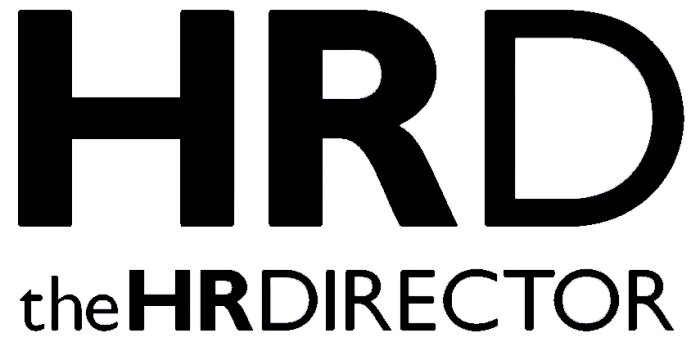When discussing the job market and automation, it becomes clear that the demand for reskilling the workforce has never been more urgent. The trend shows that future-ready employees need to adopt a lifelong learning mindset and remain agile, ready to adapt to constant change. This is the reality we face today, driven by the rise of AI and ongoing digitalization.
Traditional training methods often fall short here. They take too long or are too disconnected from real-time demands. This is where many companies are turning to microlearning strategies. These are short, focused learning sessions that deliver knowledge at the exact moment it’s needed. Methodologies often refer to them as bite-sized modules: quick and direct lessons, designed to reskill teams efficiently. To understand this better, it is crucial to know what it truly involves: from the main benefits of microlearning to how to apply the strategy effectively.
The rise of microlearning in the age of reskilling
Today, we’re talking about reskilling as it is becoming something let’s say essential for anyone who wants to stay relevant. You’ve likely seen the World Economic Forum’s 2020 prediction: 50% of all employees will need reskilling by 2025. This prediction is already proving true. Why is this happening? Simply put, the huge chunk of the skills we have now will soon be outdated.
Whether you’re an employer or a professional, you need to take reskilling seriously. Looking ahead, the WEF’s Future of Jobs Report 2025 projects that by 2030, 39% of current job skills will become obsolete. This also tells us about the urgency for both employers and employees to invest in upskilling initiatives. Basically, you need a learning strategy that fits your life and keeps you competitive. Microlearning delivers just that:
- It adapts perfectly to today’s work environment and daily workflows.
- It breaks down learning into small, manageable pieces on the exact skills that matter.
- It helps to learn constantly as it can be adapted easily to your schedule.
Key microlearning strategies for reskilling
Even if someone has strong technical knowledge, it’s not always enough. You need soft skills and personal attributes that support communication and collaboration. The next important step is the ability to keep learning, what some now call learnability. It is becoming one of the most vital skills on any CV.
Here, what we’re seeing is that organizations often struggle to motivate employees to self-initiate learnability processes, despite having access to platforms and materials. That’s why a microlearning strategy is becoming increasingly useful: it breaks down complex topics into small, focused lessons that fit busy schedules. Here are some proven techniques to apply:
1. Just-in-time learning
Just to give an example of what we see today in traditional education. The system often treats graduation as the endpoint, focusing on study, graduation, and then work. Many education systems still lack strong support for lifelong learning, focusing mainly on how many students graduate over ongoing skill development according to the UNESCO GEM Report.
On the other hand, the reality is that with constant changes in the job market, education no longer ends at graduation. So micro degrees have emerged as a solution as they are:
- Short and offer affordable credentials
- Focused on very specific skill sets and specific timing
- Completed within a year or less
- Essential for modern industries as they offer practical skills
- An alternative to the long time commitment of traditional degrees
These micro degrees are offered mostly online, making them flexible enough to fit into a “just-in-time learning” strategy. Although they may lack some of the networking benefits, joining online communities can help fill that gap. Basically, it is a strategy that provides content exactly when employees need it, like a short tutorial on using a new software tool, delivered moments before they need to apply it. And let’s not forget an important point here, this strategy boosts relevance.
2. Scenario-based micro modules
As we discussed above, microlearning itself refers to short bursts of learning content. Typically, it lasts under 10 minutes and focuses on a single topic or skill. It’s designed for a target audience of busy professionals who need on-demand and mobile-friendly training. And this is exactly where real-world simulations and role-play exercises come into play as they:
- Help practice decision-making in short sessions by providing video-based learning experiences
- Offer interactive POV-style videos, including product education and association training, with the first-person view to simulate real-life actions
- Add micro missions for skill-based challenges with rewards that simply encourage progression
- Apply chat simulations that create realistic text-message-style interactions, pss, it is perfect for improving customer service
- Offer plug-in scenarios with quick real-world dilemmas added after lessons
3. Spaced repetition
It is a learning method that helps you remember things longer by reviewing the information several times, with more time between each review. It is a proven strategy that, according to research published in Psychological Science, helps move knowledge from short-term to long-term memory by spacing out review sessions. Quizzes or summary cards work as the main base in the microlearning strategy. You can use the following methods:
- Timed reviews: revisit key concepts at set intervals (e.g. after 1 day, 2 days, 2 weeks)
- Micro quizzes: repeatable quizzes to test recall and highlight gaps
- Flashcards: digital cards that resurface periodically to remind you of the core facts
- Weekly recaps: summary modules delivered regularly to refresh memory
- Smart notifications: reminders for revisiting specific content
4. Gamification
As we mentioned a bit above, it is a part of the strategy that keeps learners engaged. They get points, badges, and leaderboards that turn learning into a motivating experience. A gamified microlearning strategy provides healthy competition, especially if we speak about onboarding training. Besides basic features like badges or rewards, you can apply:
- Levels and progress bars: show growth and unlock new content as learners advance
- Challenges and missions: themed tasks with goals to boost motivation
5. Peer-to-peer microcontent
You can encourage your employees to share short insights. You can add the “lessons learned” strategy with quick tips via internal channels like Slack or Microsoft Teams, where your inner community makes presentations and shares something new, creating a culture of inspired learning:
- Bite-sized tips: quick insights shared by employees in chat or collaboration tools
- Lessons learned: short stories or takeaways from real experiences
- Micro tutorials: brief how-tos or hacks created in the presentation
- Q&A threads: where people post questions (Q) and others provide answers (A) for ongoing chats, basically, it is an exchange on specific topics
- Recognition & sharing: encourage useful contributions just like the cloth badges scouts sew or iron onto their uniforms or the extra stripes you earn in Jiu-Jitsu
6. Micro-assessments
To check if learners understand the material without making it too hard or tiring, you always need to use small and quick tests. These tests help learners remember what they’ve learned and give you useful feedback:
- Challenges: rapid-fire questions to check if the key points are understood correctly
- Feedback: immediate feedback or let them leave anonymous comments to see if the tasks helped them
- Low-stress format: manageable assessments that can help reduce burnout
Best practices for implementation
If you want microlearning to work for your team, it’s not just about throwing content out there. You need to apply the above-offered strategies and make sure everything lines up with what people do in their jobs. It should feel relevant and useful. That’s why you need to:
- Align content with job roles: each module should focus on a real task, skill, or responsibility.
- Choose the right tools: pick platforms that support scheduling or analytics; for example, the Headway app breaks nonfiction books into short insights, reflecting how busy professionals prefer to learn today.
- Optimize for mobile: you need to assume that learners use smartphones and often spend time on social media, so you can provide short videos, maybe in TikTok style, swipeable summaries, and audio content.
- Embed feedback loops: this one is about letting users rate content, suggest topics, or ask questions; it is real-time feedback that we discussed above.
Technology and tools
You can start with dedicated microlearning apps that usually offer bite-sized chunks that you can read or listen to in about 10-15 minutes. Basically, they are all designed for busy people who want to grasp key ideas quickly. Such tools and apps help users build consistent learning routines. Here is a range of technologies you can start checking:
- LMS platforms like LearnUpon or TalentLms: these are software systems that help organizations create, deliver, and track online training courses.
- AI-based tools that auto-generate content (e.g., Synthesia, Tovuti): they use artificial intelligence to create learning materials automatically.
- Mobile apps that deliver daily learning challenges: they are designed to send short, daily tasks or quizzes to keep learners engaged regularly.
- Chatbots that quiz users or provide on-demand help: these are automated chat assistants that can test learners’ knowledge or answer questions.
Final thoughts
That said, microlearning works best when it’s carefully planned. Be mindful not to break content into too many tiny or disconnected lessons, as this can confuse learners rather than help them. It’s also important to ensure all content clearly ties back to business tasks; otherwise, it risks wasting valuable time. Ignoring learner feedback is another common mistake — it can make your training ineffective.
When we talk about the future of microlearning in workforce development, it’s clear it will become even more essential with advances in AI and mobile technology. Learning is becoming more personalized, and on-the-go microlearning is getting more effective. Companies that use the above strategies according to their case studies and statistics stay ahead as they build skills faster and create a workforce ready to meet next-day challenges.







